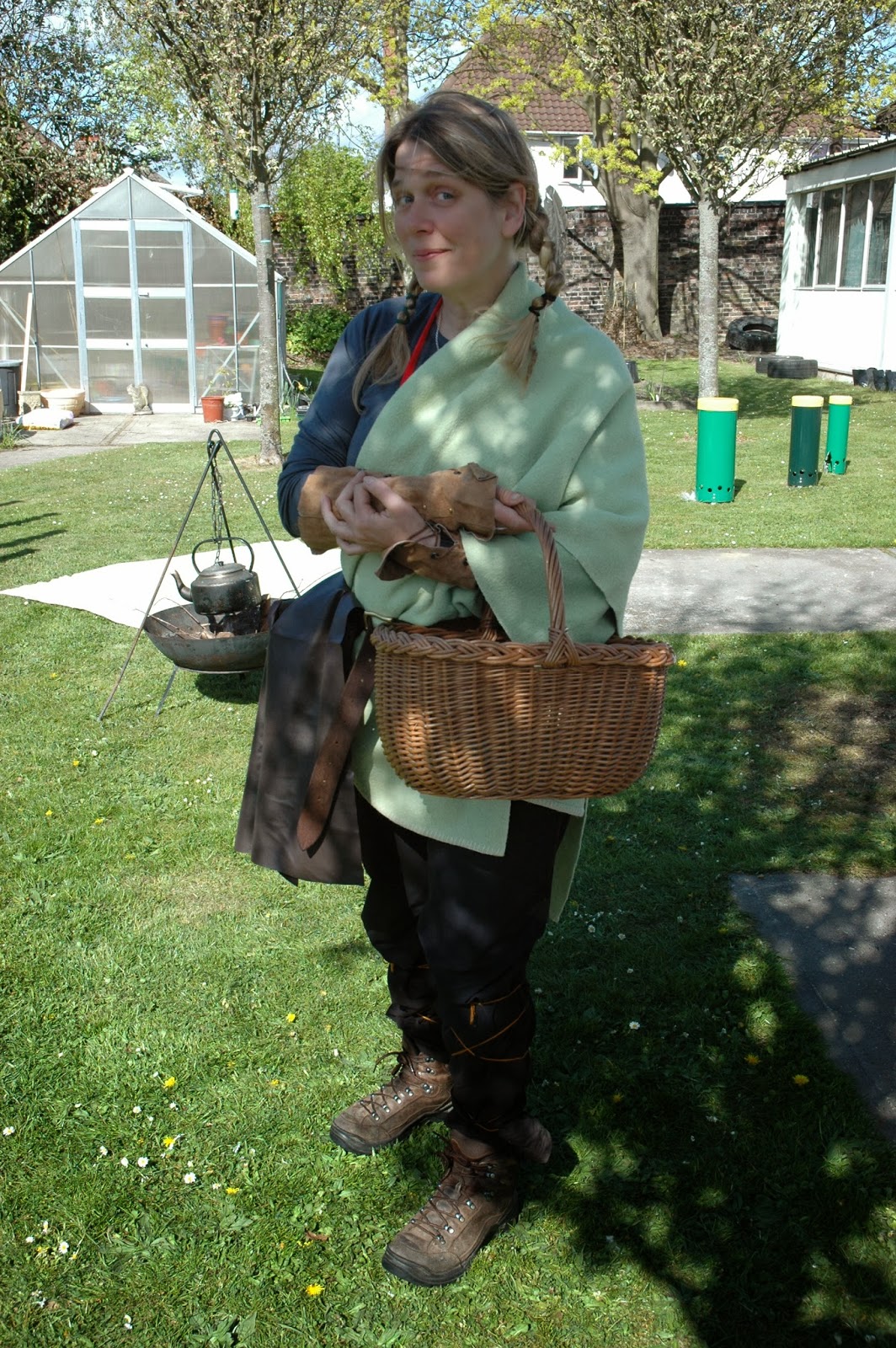 |
| Putting the kettle on |
If you don't have a fancy dress box (and why wouldn't you?!) then old dark coloured towels, blankets, that sort of thing works well, piece of twine wrapped around the middle and, hey presto, instant Viking.
 |
| Mell gets her Viking on |
Next, come up with some authentic-sounding Viking names; today we would be Helga and Ingrid. Then pick a Viking celebration day (of which there are quite a few); we settled for Sigrblot, which signified the coming of the warm season - obligingly the sun came out and made this feast day all the more glorious.
You also need to set up a banquet table; we used several large picnic tables. Now, the more discerning of you will notice that there are at least two anomilies in the picture; one, Vikings didn't have teapots and teacups, however, I was fresh out of cow horn drinking vessels, and two, they probably didn't have tartan either.
 |
| Get this party started: all we were missing were some rowdy Vikings |
 |
| Rustic soda bread |
All set up, we were ready to invite the Vikings to help us celebrate - in this case, year 3 children from Roman Hill primary school.
After an introduction to Helga and Ingrid (at several points during the sessions I managed to forget which Viking I was, much to the children's amusement), we went aforaging through the small copse in the school grounds. Anything the children found of interest was added to the basket; nuts with holes in, leaves with strange colours, funny-looking sticks, you name it, we collected it.
 |
| Left, Mell goes through what is edible; middle, our spoils; right, mouse-nibbled cherry pips. |
Having established what we would eat safely, it was time to feast; whilst we tucked into soda bread with local honey, Ingrid (Mell) brewed two types tea; dandelion and nettle. It was then that one of the Vikings asked if they could try the cabbage...upon declaring it was more than edible, the masses started munching on the raw leeks and even the onions!
 |
| Roman Hill Primary's very own Viking clan |
Part of what I love about this work is how each and every session changes, according to what the children are interested in. This, I feel, is where the real experience comes from and what makes the most of outdoor learning.
This session was run by EastFeast, funded by Local Food, as part of the Waveney Food For Thought project.
If you are interested in having a Viking party at a school please contact me at phoebejwingate@gmail.com.

No comments:
Post a Comment